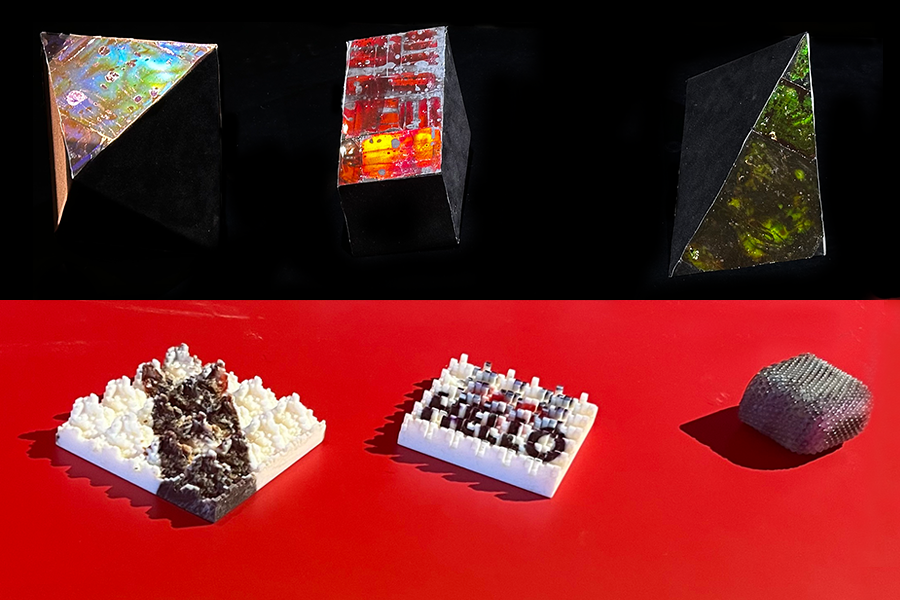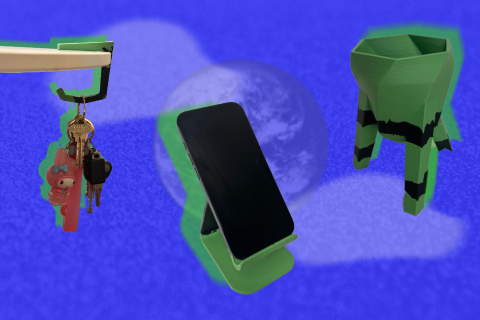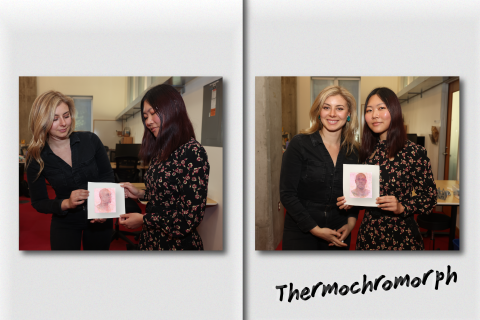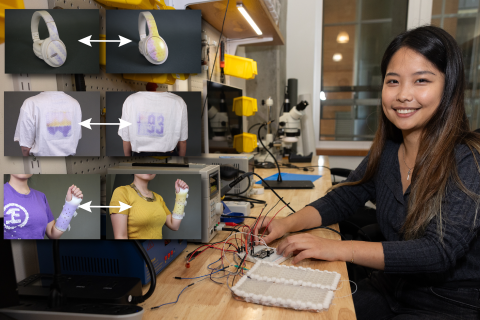In 1968, MIT Professor Stephen Benton transformed holography by making three-dimensional images viewable under white light. Over fifty years later, holography’s legacy is inspiring new directions at MIT CSAIL, where the Human-Computer Interaction Engineering (HCIE) group, led by Professor Stefanie Mueller, is pioneering programmable color — a future in which light and material appearance can be dynamically controlled.
To celebrate the closing of "Optiker," the MIT Museum’s exhibit honoring Benton’s work, and inspire connections between white-light holography and human-computer interaction, MIT PhD student and CSAIL researcher Paris Myers SM ’25 (Media Lab) and MIT Museum Studio Manager and CAVS research affiliate Seth Riskin co-created a special program at the MIT Museum with Deborah G. Douglas, Senior Director of Collections and Curator of Science and Technology.
The program featured five unique perspectives, from historical recounts of holography to the future of programmable color at CSAIL. Douglas reflected on Benton’s life, work, and impact. Riskin traced the history of light art at MIT through his own holographic arts practice — including transforming light in real-time through human-scale holograms — while at MIT CAVS working with Otto Piene.
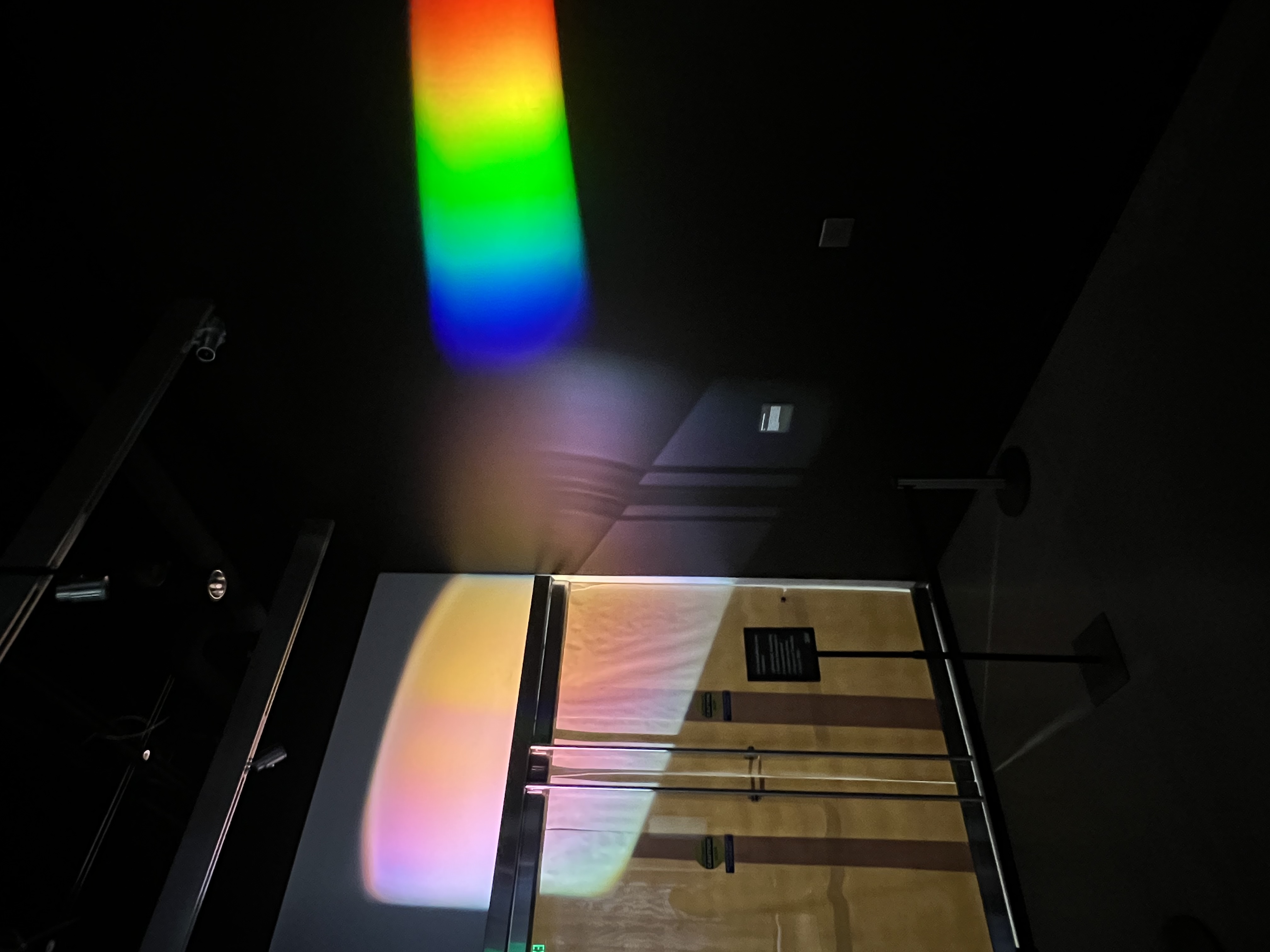
Extending holography’s principles into programmable color, Myers shared her current research on fabricating programmable structural color — color produced by light-reflecting nanostructures — with holographic techniques. MIT EECS PhD student and CSAIL researcher Yunyi Zhu presented her research on Lenticular Objects (UIST 2021), which creates multi-perspective imagery through 3D-printed lens surfaces. MIT PhD student and CSAIL colleague Maxine Perroni-Scharf (EECS) discussed Constructing Printable Surfaces with View-Dependent Appearance (SIGGRAPH 2023, with Szymon Rusinkiewicz), which optimizes surfaces to shift dramatically as viewers move. Together, their projects situate holography not as a closed chapter, but as a foundation for programmable light and interactive design.
The event closed with the premiere of “RED GREEN BLUE,” a 3D-printed, holographic sculptural artwork by Myers, created in collaboration with Ben Miller (MIT MechE ‘23) and Mueller, and supported by a grant from the Council for the Arts at MIT. The piece consists of three warped solids, 3D-printed and coated in ultrablack materials, each representing a red, green, or blue channel. One side of each object is covered in hand-fabricated holographic film that produces structural color — vivid, angle-dependent hues generated by nanoscale diffraction rather than pigments. As viewers move, the geometries and films reveal subtle parallax and depth, echoing the perceptual illusions of holography while scaling them into programmable, sculptural form.
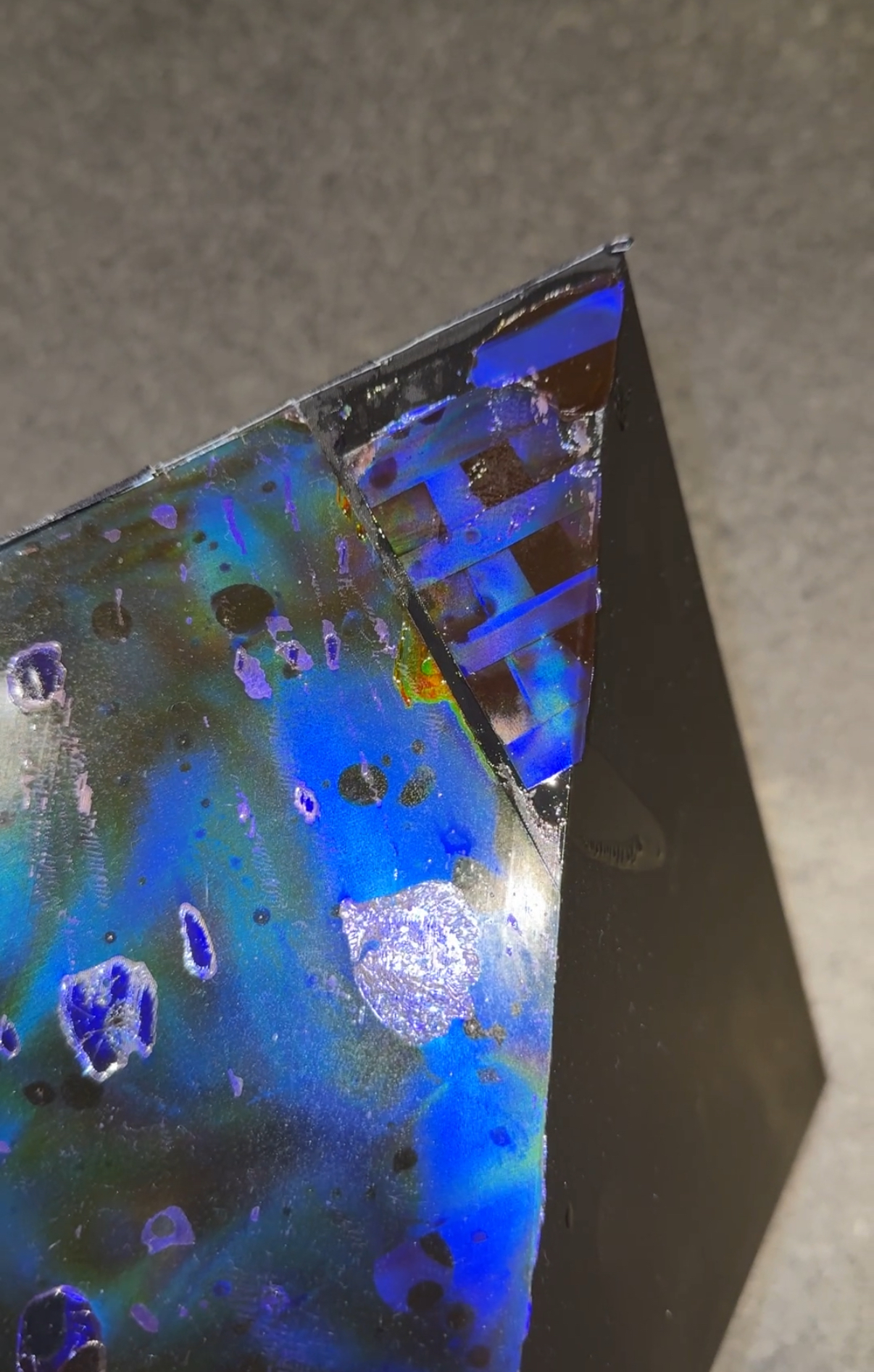
Going forward, CSAIL’s HCIE group plans to continue reimagining holography as a programmable color space: a field that moves beyond static displays to dynamic, computationally controlled materials.
